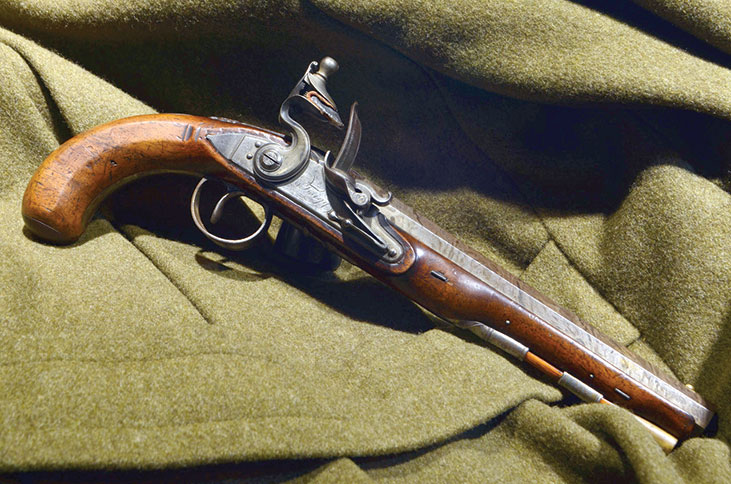Pistols Duel For Attention
It would be overstating the case to say that the Rock Island auction is back to normal, but it’s close. Once again, traveling to the Quad Cities to browse the auction hall and exhaust your gun budget (and probably a few mortgage payments as well) is a pleasure for those of us who just love handling guns.
A quick glance at the results of recent auctions, both the Premier and the on-line and collectors’ auctions, indicates that prices are holding up pretty well in this time of unprecedented demand for guns and ammunition of all classes, at all levels.
At the Sporting & Collector Auction in early June, I went with a list of about a dozen guns to look at, and possibly bid on. Of those, only one made the cut — a C.G. Haenel “Original Aydt” Schützen rifle.
As usually happens, a couple of other guns jumped out and introduced themselves, demanding to be handled, pondered upon and maybe pursued. One was a Colt Single Action Army in .32-20, manufactured in 2009, almost new in the box. For reasons I’m at a loss to explain, I’ve had a lurking desire for a single-action .32-20 to go with my Winchester Low Wall in that caliber, on the bizarre notion that if I ever went out wandering a creek bed with rifle and revolver, I would have to carry only one type of ammunition. Don’t laugh: I’ve bought guns for less sensible reasons than that!
I harbored designs on the Colt for a full day before deciding to let it go to a more deserving home. For the record, it sold for almost $2,000 altogether (hammer price plus buyer’s premium plus tax) so obviously a few people wanted it. In the meantime, however, I’d been introduced to a John Fox Twigg duelling pistol (London, circa 1770) and become sufficiently intrigued that I wanted it more than the Colt.

Twigg is not a household name, even among gun guys, but he’s well known and highly respected by those who spend their waking hours (and many dreaming ones as well) contemplating life two centuries ago. John Manton, one of the acknowledged fathers of the London fine-gun trade, apprenticed with Twigg, rose to be shop foreman, and when he went out on his own continued to make duelling pistols in the Twigg fashion.
John Fox Twigg is credited with espousing the idea that a gun can be plain to the point of severity, yet by combining the finest materials with superb craftsmanship, become a work of the gunmaker’s highest art. Twigg eschewed silver fittings in favor of finely wrought iron and steel, as well as introducing certain stylistic touches, the influence of which can be seen today on a new Purdey or Holland & Holland.
All of this combined to make the Twigg highly desirable, and when it came up on the second morning I was waiting, bidding card in hand. Others wanted the gun too but, fortunately, no one wanted it quite badly enough, and I left with it on the passenger’s seat, wrapped in a soft cloth.
To the horror of some of my gun-collecting friends, I have no interest in any gun I can’t shoot. Since my experience with flintlocks is almost nil, every aspect then became an adventure, from figuring out what powder to use for both main and priming charges, to buying suitable patches (what diameter? what thickness?) to getting suitable round balls to fit its .53-inch bore (.495? .509? .515?). Flints? Flint leathers? A puzzle in themselves. In the end, I bought some of everything, fashioned a suitable everyday ramrod from a piece of dowel capped with an empty .40 S&W case, and was ready to go.
Proceeding gingerly, I tested every aspect before combining powder, patch and ball, and it fired satisfactorily. One bothersome feature is an extraordinarily heavy trigger pull — highly unusual in a duelling pistol, and Twigg was noted for his fine triggers — so I’m taking it down to Lee Shaver to have it looked at before I fire it again.
One slightly worrisome thing, though: I am really looking forward to shooting it some more. I mean really really looking forward to it.
Maybe life is back to normal after all.–Terry Wieland

